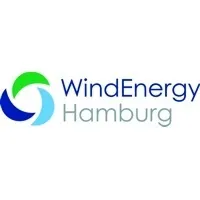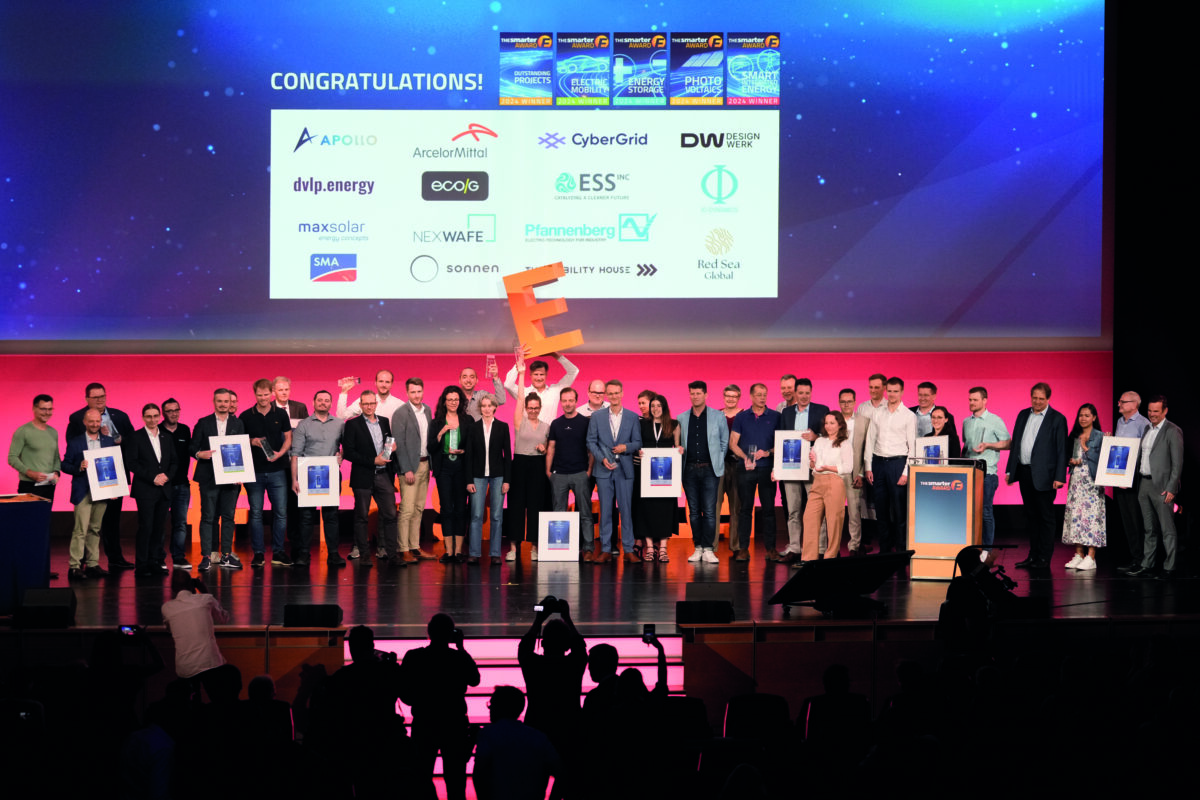
Latest NEWS
Empowering the Future: Exploring the Top 5 Key Trends at WindEnergy Hamburg 2024

Offshore Wind Power: Advancements and Opportunities at WindEnergy Hamburg 2024

One of the top trends at WindEnergy Hamburg 2024 was the increasing scale of offshore wind farms. As technology continues to improve and costs decrease, developers are now able to build larger and more efficient wind farms in deeper waters. This opens up new opportunities for countries with limited onshore space, such as the United Kingdom and the Netherlands, to harness the power of wind energy. The scale of these projects is truly impressive, with some offshore wind farms capable of generating enough electricity to power hundreds of thousands of homes.
Another key trend at WindEnergy Hamburg 2024 was the development of floating offshore wind farms. Traditionally, offshore wind turbines have been fixed to the seabed using foundations. However, floating wind farms offer a flexible and cost-effective solution for harnessing wind energy in deeper waters. This technology is still in its early stages, but it has the potential to revolutionize the offshore wind industry and open up vast new areas for development.
In addition to advancements in technology, WindEnergy Hamburg 2024 also highlighted the importance of collaboration and partnerships in the offshore wind sector. As the industry continues to grow, it is becoming increasingly clear that no single company or country can tackle the challenges and opportunities alone. Collaboration between industry stakeholders, governments, and research institutions is crucial for driving innovation, reducing costs, and ensuring the sustainable development of offshore wind power.
Furthermore, WindEnergy Hamburg 2024 showcased the increasing role of digitalization and data analytics in optimizing the performance of offshore wind farms. By collecting and analyzing vast amounts of data, operators can identify potential issues, optimize maintenance schedules, and improve overall efficiency. This not only reduces costs but also enhances the reliability and performance of offshore wind farms, making them a more attractive investment for both developers and investors.
Lastly, WindEnergy Hamburg 2024 highlighted the growing importance of environmental sustainability in the offshore wind industry. As the world grapples with the urgent need to reduce greenhouse gas emissions and combat climate change, offshore wind power offers a clean and renewable energy source. However, it is essential to ensure that the development and operation of offshore wind farms are carried out in an environmentally responsible manner. This includes minimizing the impact on marine ecosystems, protecting wildlife, and considering the needs and concerns of local communities.
In conclusion, WindEnergy Hamburg 2024 provided a glimpse into the future of offshore wind power. The increasing scale of wind farms, the development of floating offshore wind technology, the importance of collaboration, the role of digitalization, and the focus on environmental sustainability were the top trends that emerged from this international trade fair. As the world continues to transition towards a more sustainable energy future, offshore wind power will undoubtedly play a crucial role in meeting our growing energy needs while reducing our carbon footprint.
Exploring the Latest Wind Turbine Technology and Innovations at WindEnergy Hamburg 2024
WindEnergy Hamburg 2024 is set to be a groundbreaking event that will showcase the latest trends and innovations in wind turbine technology. As the world continues to shift towards renewable energy sources, the wind energy sector is experiencing rapid growth and development. This article will explore the top five key trends that will be on display at WindEnergy Hamburg 2024.
One of the most exciting trends in wind turbine technology is the development of larger and more powerful turbines. Over the years, wind turbines have become taller and more efficient, allowing for increased energy production. At WindEnergy Hamburg 2024, visitors can expect to see turbines that are capable of generating even more electricity, thanks to advancements in blade design and materials. These larger turbines will play a crucial role in meeting the growing demand for clean energy.
Another trend that will be showcased at WindEnergy Hamburg 2024 is the integration of digital technologies into wind turbine operations. The use of artificial intelligence and machine learning algorithms allows for more accurate predictions of wind patterns, optimizing the performance of turbines. Additionally, the implementation of Internet of Things (IoT) devices enables real-time monitoring and maintenance, reducing downtime and improving overall efficiency. Visitors to the event will have the opportunity to witness firsthand how these digital technologies are revolutionizing the wind energy industry.
In recent years, there has been a growing focus on sustainability and environmental impact within the wind energy sector. At WindEnergy Hamburg 2024, attendees can expect to see a range of innovative solutions aimed at reducing the environmental footprint of wind turbines. This includes the development of recyclable materials for turbine components, as well as the implementation of eco-friendly manufacturing processes. The event will provide a platform for companies to showcase their commitment to sustainability and discuss the importance of responsible wind energy production.
The fourth trend that will be explored at WindEnergy Hamburg 2024 is the integration of energy storage solutions into wind farms. As renewable energy sources become more prevalent, the need for efficient energy storage becomes increasingly important. Visitors to the event can expect to see advancements in battery technology, as well as innovative solutions for storing excess energy generated by wind turbines. These energy storage systems will play a crucial role in ensuring a stable and reliable supply of electricity from wind farms.
Lastly, WindEnergy Hamburg 2024 will highlight the importance of offshore wind energy. As land-based wind resources become more limited, offshore wind farms offer a vast potential for clean energy generation. The event will showcase the latest developments in offshore wind turbine technology, including floating turbines and advanced foundation designs. Visitors will have the opportunity to learn about the unique challenges and opportunities associated with offshore wind energy and witness the groundbreaking solutions being developed.
In conclusion, WindEnergy Hamburg 2024 will be a platform for showcasing the latest trends and innovations in wind turbine technology. From larger and more powerful turbines to the integration of digital technologies, the event will provide valuable insights into the future of the wind energy sector. Additionally, the focus on sustainability, energy storage, and offshore wind energy will highlight the industry’s commitment to a greener and more sustainable future. WindEnergy Hamburg 2024 is set to empower the future of wind energy and pave the way for a cleaner and more sustainable world.
Energy Storage Solutions for Wind Energy: Key Trends at WindEnergy Hamburg 2024
WindEnergy Hamburg is one of the most prestigious events in the wind energy industry, bringing together experts, innovators, and industry leaders from around the world. The event showcases the latest advancements and trends in wind energy, providing a platform for networking, knowledge sharing, and collaboration. In this article, we will explore the top 5 key trends in energy storage solutions for wind energy that were highlighted at WindEnergy Hamburg 2024.
1. Advancements in Battery Technology:
One of the most significant trends in energy storage solutions for wind energy is the advancements in battery technology. Batteries play a crucial role in storing excess energy generated by wind turbines and releasing it when there is a high demand. At WindEnergy Hamburg 2024, several companies showcased their latest battery technologies, including improved energy density, longer lifespan, and faster charging capabilities. These advancements are essential for maximizing the efficiency and reliability of wind energy systems.
2. Integration of Artificial Intelligence:
Artificial Intelligence (AI) is revolutionizing various industries, and the wind energy sector is no exception. AI algorithms can analyze vast amounts of data collected from wind turbines and predict wind patterns, optimize energy storage, and enhance overall system performance. At WindEnergy Hamburg 2024, AI-powered energy storage solutions were a major highlight. These solutions can adapt to changing weather conditions, optimize energy usage, and improve the overall efficiency of wind energy systems.
3. Hybrid Energy Storage Systems:
Hybrid energy storage systems, combining different storage technologies, were another key trend at WindEnergy Hamburg 2024. These systems integrate batteries, flywheels, and compressed air energy storage (CAES) to provide a more reliable and efficient energy storage solution. By combining different storage technologies, hybrid systems can overcome the limitations of individual technologies and ensure a continuous and stable power supply.
4. Grid Integration and Smart Grids:
Grid integration is a critical aspect of wind energy systems, and at WindEnergy Hamburg 2024, there was a strong focus on smart grids and their role in energy storage. Smart grids enable the seamless integration of renewable energy sources, such as wind, into the existing power grid. They can monitor energy demand, optimize energy storage and distribution, and ensure a stable and reliable power supply. The advancements in smart grid technology showcased at the event highlighted the importance of grid integration for the successful implementation of energy storage solutions in wind energy.
5. Sustainability and Circular Economy:
The final key trend at WindEnergy Hamburg 2024 was the emphasis on sustainability and the circular economy. As the world transitions towards renewable energy sources, it is crucial to ensure that the entire lifecycle of wind energy systems is sustainable. This includes the production, operation, and decommissioning of wind turbines and energy storage systems. At the event, companies showcased innovative solutions for recycling and repurposing wind turbine components, reducing waste, and minimizing the environmental impact of wind energy systems.
In conclusion, WindEnergy Hamburg 2024 provided valuable insights into the top 5 key trends in energy storage solutions for wind energy. The advancements in battery technology, integration of artificial intelligence, hybrid energy storage systems, grid integration, and the focus on sustainability and the circular economy were the major highlights of the event. These trends are shaping the future of wind energy, empowering the industry to harness the full potential of this renewable energy source and contribute to a more sustainable and greener future.
Digitalization and Automation in the Wind Energy Sector: Insights from WindEnergy Hamburg 2024
The wind energy sector is undergoing a significant transformation, driven by advancements in digitalization and automation. These trends were prominently featured at the WindEnergy Hamburg 2024 conference, where industry leaders and experts gathered to discuss the future of the sector. In this article, we will explore the top five key trends in digitalization and automation that emerged from the conference.
One of the most prominent trends discussed at WindEnergy Hamburg 2024 was the integration of artificial intelligence (AI) and machine learning in wind energy systems. AI has the potential to optimize the performance of wind turbines by analyzing vast amounts of data in real-time. By leveraging AI algorithms, operators can predict maintenance needs, optimize energy production, and improve overall efficiency. This trend is expected to revolutionize the wind energy sector, making it more reliable and cost-effective.
Another key trend highlighted at the conference was the use of drones for inspection and maintenance of wind turbines. Drones equipped with high-resolution cameras and sensors can quickly and accurately assess the condition of turbine blades, reducing the need for manual inspections. This not only saves time and resources but also improves safety for maintenance personnel. The use of drones in the wind energy sector is expected to increase in the coming years, as their capabilities continue to improve and regulations become more favorable.
Digital twin technology was also a hot topic at WindEnergy Hamburg 2024. A digital twin is a virtual replica of a physical asset, such as a wind turbine. By creating a digital twin, operators can monitor and simulate the performance of the asset in real-time. This technology enables predictive maintenance, as operators can identify potential issues before they cause significant downtime. Digital twins also facilitate the optimization of energy production by simulating different operating conditions and identifying the most efficient settings.
The fourth trend discussed at the conference was the development of advanced analytics platforms for wind energy systems. These platforms leverage big data and analytics to provide operators with actionable insights. By analyzing data from various sources, such as weather forecasts, turbine performance data, and energy market trends, operators can make informed decisions to maximize energy production and minimize costs. Advanced analytics platforms also enable the integration of renewable energy sources into the grid, ensuring a stable and reliable power supply.
Lastly, the conference highlighted the importance of cybersecurity in the wind energy sector. As wind energy systems become more interconnected and reliant on digital technologies, they also become more vulnerable to cyber threats. The industry is increasingly recognizing the need for robust cybersecurity measures to protect critical infrastructure and ensure the integrity of data. WindEnergy Hamburg 2024 showcased various cybersecurity solutions, including encryption technologies, intrusion detection systems, and secure communication protocols.
In conclusion, the WindEnergy Hamburg 2024 conference shed light on the top five key trends in digitalization and automation in the wind energy sector. These trends, including the integration of AI and machine learning, the use of drones for inspection and maintenance, digital twin technology, advanced analytics platforms, and cybersecurity, are set to transform the industry. By embracing these trends, the wind energy sector can become more efficient, reliable, and sustainable, empowering a future powered by clean and renewable energy.
Environmental Impact and Sustainability in Wind Energy: Highlights from WindEnergy Hamburg 2024
Wind energy has emerged as a key player in the global shift towards renewable energy sources. As the world grapples with the urgent need to reduce carbon emissions and combat climate change, the wind energy sector has been steadily growing and evolving. WindEnergy Hamburg, one of the world’s leading trade fairs for the wind energy industry, provides a platform for industry professionals to come together and explore the latest trends and innovations in this field. In this article, we will delve into the top five key trends in wind energy that were highlighted at WindEnergy Hamburg 2024, with a particular focus on the environmental impact and sustainability aspects.
First and foremost, one of the most significant trends in wind energy is the increasing focus on offshore wind farms. Offshore wind energy has gained traction in recent years due to its potential for higher energy generation and reduced visual impact on land. At WindEnergy Hamburg 2024, several exhibitors showcased their latest offshore wind turbine technologies, highlighting their ability to harness the strong and consistent winds at sea. This trend not only contributes to the expansion of renewable energy capacity but also helps to reduce the environmental impact of traditional energy sources.
Another key trend that emerged at WindEnergy Hamburg 2024 is the integration of energy storage solutions with wind power. As wind energy is intermittent and dependent on weather conditions, the ability to store excess energy for later use is crucial for a reliable and stable power supply. Various companies showcased innovative energy storage technologies, such as advanced batteries and hydrogen storage systems, which can store surplus wind energy and release it when needed. This integration of energy storage with wind power not only enhances the efficiency of wind farms but also contributes to the overall sustainability of the energy system.
In line with the growing emphasis on sustainability, the third trend highlighted at WindEnergy Hamburg 2024 is the development of more environmentally friendly materials for wind turbines. Traditionally, wind turbine blades have been made from fiberglass, which is not easily recyclable and can have a significant environmental impact. However, at the trade fair, several exhibitors showcased blades made from sustainable materials such as bio-based composites and recyclable thermoplastics. These materials not only reduce the carbon footprint of wind turbines but also enable easier recycling and end-of-life management.
Furthermore, digitalization and data-driven solutions were prominent trends at WindEnergy Hamburg 2024. The wind energy industry is increasingly leveraging advanced data analytics and artificial intelligence to optimize the performance and maintenance of wind turbines. By collecting and analyzing vast amounts of data, operators can identify potential issues, predict maintenance needs, and optimize energy production. This trend not only improves the efficiency and reliability of wind farms but also contributes to reducing downtime and minimizing the environmental impact of maintenance activities.
Last but not least, community engagement and social acceptance emerged as a key trend in the wind energy sector. As wind farms continue to expand, it is crucial to involve local communities in the decision-making process and address any concerns they may have. At WindEnergy Hamburg 2024, several exhibitors showcased their efforts to engage with local communities, promote transparency, and ensure the equitable distribution of benefits. This trend highlights the industry’s commitment to sustainable development and its recognition of the importance of social acceptance for the long-term success of wind energy projects.
In conclusion, WindEnergy Hamburg 2024 shed light on the top five key trends in wind energy, with a particular focus on the environmental impact and sustainability aspects. The increasing focus on offshore wind farms, the integration of energy storage solutions, the development of environmentally friendly materials, the adoption of digitalization and data-driven solutions, and the emphasis on community engagement and social acceptance all contribute to the growth and sustainability of the wind energy sector. As the world continues its transition towards a clean energy future, these trends will play a crucial role in empowering the future of wind energy.



